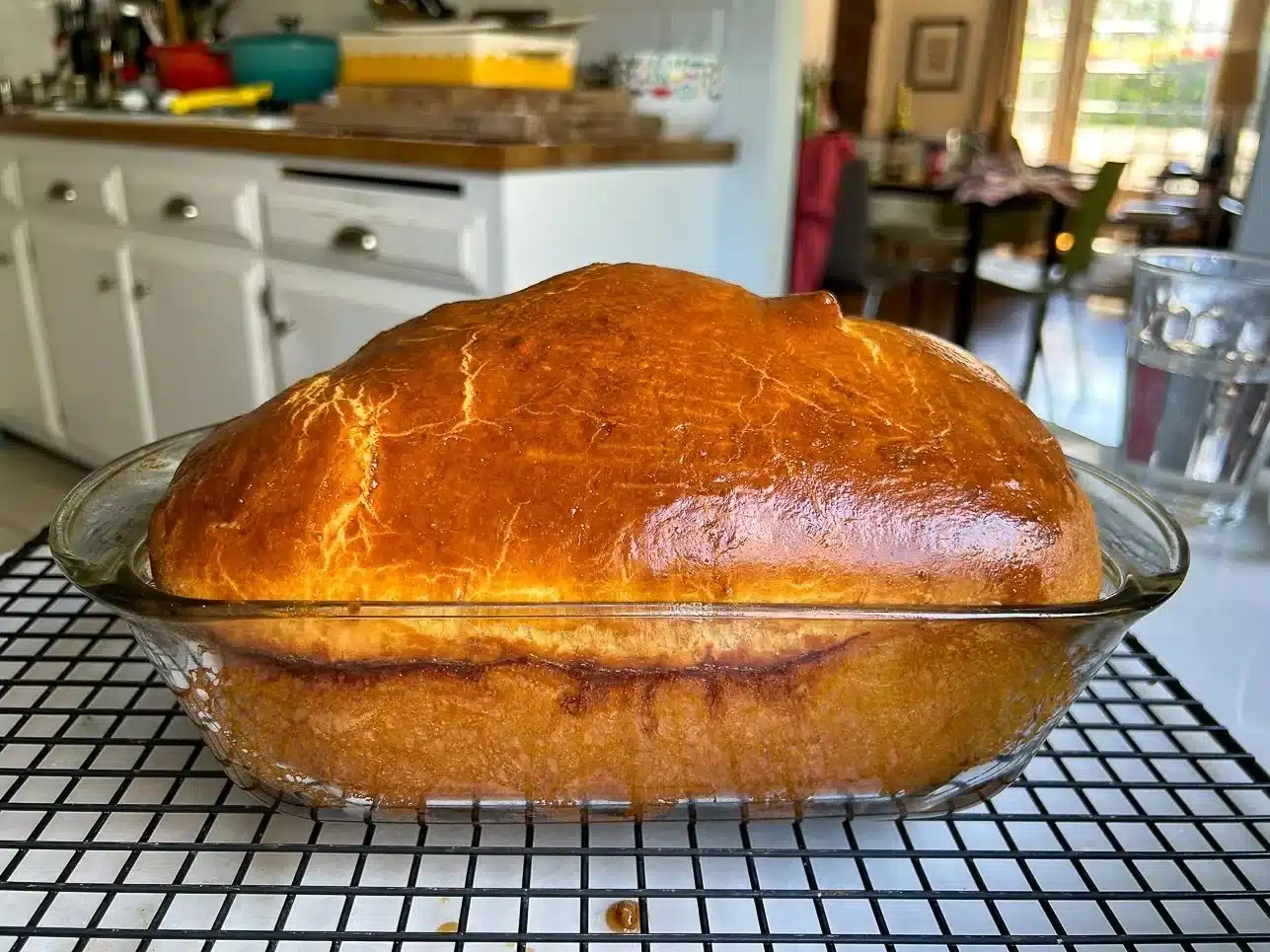Place your dough hook in your stand mixer (you're really going to need a stand mixer for this) and combine the all-purpose flour, bread flour, yeast, sugar, salt, water, and 5 of the eggs. Beat on low speed for 3 to 4 minutes, or until all of the ingredients have come together. Every so often stop and scrape down the sides of the bowl. Once the dough has come together, beat on low speed for another 3 to 4 minutes. The dough will be stiff and seem quite dry.
On low speed, add the butter one piece at a time, taking your time to let the butter disappear after each addition. Continue until you've used up all the butter and then keep mixing on low speed for about 10 minutes, scraping the bowl as necessary. Your goal: get all of the butter incorporated into that dough, even if you have to use your hands.
Once the butter's completely incorporated, turn up the speed to medium and beat for another 15 minutes, or until the dough becomes sticky, soft, and somewhat shiny. It will take some time to come together. (It may look shaggy at first, but will turn smooth and silky eventually.) After that, turn the speed up to medium-high and beat for 1 minute. The dough should make slapping sounds against the side of the bowl. If it seems wet and loose, add a few tablespoons of flour and mix until it comes together. It's ready when you can gather it all together and pick it up in one piece.
Place in a large bowl or plastic container and cover it with plastic wrap, pressing the wrap directly on top of the dough. Let the dough proof in the refrigerator for at least 6 hours or overnight.
Remove the dough from the fridge and divide it in half. If you want to use half to make sticky buns, pop that half back in the bowl and refrigerate until you're ready. Otherwise, line two 9-by-5-inch loaf pans with parchment or just spray them with cooking spray (that's what I did).
Press the dough into a 9-inch square (it'll feel like "cold, clammy Play-Doh"). Facing the square, fold down the top one-third toward you, and then fold up the bottom one-third, as if folding a letter. Press to join these layers. Turn the folded dough over and place it, seam-side down, in one of the prepared pans. Repeat with the second piece of dough, if you're doing two.
Cover lightly with plastic and place in a warm spot to proof for 4 to 5 hours, or until the loaves have nearly doubled in size. They should have risen to the rim of the pan and be rounded on top.
Position a rack in the center of the oven and heat to 350 degrees F.
In a small bowl, whisk the remaining egg until blended. Gently brush the tops of the loaves with the beaten egg.
Bake for 35 to 45 minutes, or until the tops and sides of the loaves are completely golden brown. Let cool in the pans on wire racks for 30 minutes, then turn the loaves out of the pans and continue to cool on the racks. The bread can be stored tightly wrapped in plastic wrap at room temperature for up to 3 days or in the freezer for up to one month.
